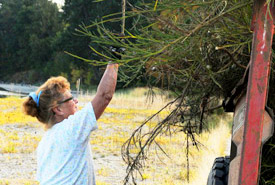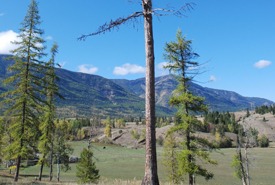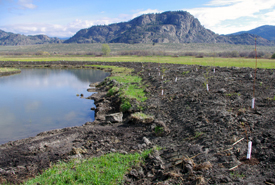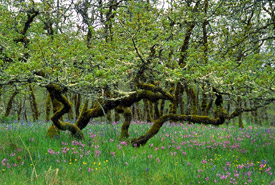Stewardship and restoration
Stewardship activities are carried out by our conservation staff with the goal of maintaining and improving an area's ecological integrity. Stewardship staff work across many different types of habitat, taking inventory of plants and animals, collaborating with local partners and monitoring how the land changes over time.
Ecological restoration

Gillan Mead, Conservation Volunteer, BC
Not all of our projects start out as pristine wilderness. In fact, some of them are so heavily damaged by past land use that they need significant help to get back to a state in which the native plants and animals can thrive.
The Nature Conservancy of Canada has a long history of taking on restoration projects to rehabilitate degraded lands. Here in BC we have helped nurture some dramatic transformations, where former industrial sites are once again bursting with plant and animal life.
Our stewardship staff work with local experts, other conservation groups and Conservation Volunteers to restore the natural features and functions of our conservation areas. Common threats to native habitat that can be overcome through careful restoration activities include invasive non-native species, damage from industrial and recreational use, and encroaching forests in grasslands.
Feature restoration projects

Open forest on Thunder Hill Ranch, after restoration (Photo by Cam Gilles)
Thunder Hill Ranch and Marion Creek Benchlands: Beating back the forest
Working with other conservation groups, the provincial and local governments, NCC is engaged in a multi-year restoration project in the East Kootenay that aims to reclaim the native woodlands and grasslands from a century of encroaching forest and invasive plants. The ultimate goal of this project is to increase the quality of the natural habitat for now-rare species such as badger and Lewis’s woodpecker.
Learn more about Thunder Hill Ranch and Marion Creek Benchlands.
Osoyoos Oxbows: Habitat restoration happens here

Bobolink Meadows oxbow restoration project (Photo by Bruce Harrison)
In 2012-13, we worked with Ducks Unlimited Canada (DUC) to restore 162 acres of critical wetland habitat in the Okanagan Valley that had been converted to agricultural fields in the mid-twentieth century. The project rebuilt the natural winding oxbows and streamside habitat throughout the Osoyoos Oxbows floodplain located at the north end of Osoyoos Lake. In 2017, NCC acquired an additional 36 hectares (90 acres) in the Osoyoos Oxbows floodplain, which will be restored to a naturally functioning wetland, once again in partnership with DUC.
Campbell River Estuary: The amazing makeover
Once an industrial mud pit, the Campbell River Estuary has made a dramatic transformation back into an area of rich diversity and beauty. Thanks to key partnerships and a caring community, NCC was able to rehabilitate a lifeless shoreline into a thriving hub for a host of coastal wildlife. Visitors can experience first-hand the beautiful lands that are now one of Campbell River's favourite parks. Learn more >

Garry oak, Cowichan Garry Oak Preserve, BC (Photo by Tim Ennis/NCC)
Cowichan Garry Oak Preserve: A living laboratory
Not only has NCC restored the extensive Garry oak habitat on this conservation property near Duncan, the Preserve has hosted research scientists from across North America who are experimenting with ways and means for restoring Garry oak ecosystems. Much of their work has contributed to NCC and other organizations' ongoing efforts to restore Garry oak ecosystems in the Pacific Northwest. Learn more >




